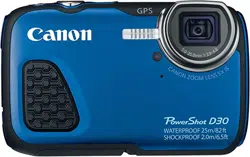Loading ...
Loading ...
Loading ...

Before Use
Basic Guide
Advanced Guide
Camera Basics
Using GPS
Functions
Auto Mode
Other Shooting
Modes
P Mode
Playback Mode
Setting Menu
Accessories
Appendix
Index
134
Before Use
Basic Guide
Advanced Guide
Camera Basics
Using GPS
Functions
Auto Mode
Other Shooting
Modes
P Mode
Playback Mode
Setting Menu
Accessories
Appendix
Index
Subjects in shots look too dark.
• Set the ash mode to [h] (=
77).
• Adjust brightness by using exposure compensation (=
67).
• Adjust contrast by using i-Contrast (=
69, 100).
• Use AE lock or spot metering (=
68).
Subjects look too bright, highlights are washed-out.
• Set the ash mode to [!] (=
42).
• Adjust brightness by using exposure compensation (=
67).
• Use AE lock or spot metering (=
68).
• Reduce the lighting on subjects.
Shotslooktoodarkdespitetheashring(=
37).
• Shoot within ash range (=
148).
• Increase the ISO speed (=
69).
Subjectsinashshotslooktoobright,highlightsarewashed-out.
• Shoot within ash range (=
148).
• Set the ash mode to [!] (=
42).
Whitedotsorsimilarimageartifactsappearinashshots.
• This is caused by light from the ash reecting off dust or airborne particles.
Shots look grainy.
• Lower the ISO speed (=
69).
• High ISO speeds in some shooting modes may cause grainy images (=
52).
Subjectsareaffectedbyred-eye(=
44).
• Set [Red-Eye Lamp] to [On] (=
48) to activate the red-eye reduction lamp
(=
4) in ash shots. Note that while the red-eye reduction lamp is on (for about
one second), it is not possible to shoot, because the lamp is counteracting red-eye.
For best results, have subjects look at the red-eye reduction lamp. Also try increasing
the lighting in indoor scenes and shooting at closer range.
• Edit images using red-eye correction (=
100).
Recording to the memory card takes too long, or continuous shooting
is slower.
• Use the camera to perform low-level formatting of the memory card (=
107).
Shooting settings or FUNC. menu settings are not available.
• Available setting items vary by shooting mode. Refer to “Functions Available in Each
Shooting Mode”, “FUNC. Menu”, and “Shooting Tab Menu” (=
140 – 144).
Shooting Movies
The elapsed time shown is incorrect, or recording is interrupted.
•
Use the camera to format the memory card, or switch to a card that supports high-
speed recording. Note that even if the elapsed time display is incorrect, the length of
movies on the memory card corresponds to the actual recording time (
=
106, 148
).
[ ] is displayed and shooting stops automatically.
The camera’s internal memory buffer lled up as the camera could not record to the
memory card quickly enough. Try one of the following measures.
• Use the camera to perform low-level formatting of the memory card (=
107).
• Lower the image quality (=
45).
• Switch to a memory card that supports high-speed recording (=
148).
Zooming is not possible.
•
Zooming is not possible when shooting movies in [ ] (
=
55
) and [ ] (
=
64
) modes.
Subjects look distorted.
• Subjects that pass in front of the camera quickly may look distorted. This is not a
malfunction.
Playback
Playback is not possible.
• Image or movie playback may not be possible if a computer is used to rename les or
alter the folder structure. Refer to "Software Instruction Manual" (=
119) for details
on folder structure and le names.
Playback stops, or audio skips.
• Switch to a memory card that you have performed low-level formatting on with the
camera (=
107).
• There may be brief interruptions when playing movies copied to memory cards that
have slow read speeds.
• When movies are played on a computer, frames may be dropped and audio may skip
if computer performance is inadequate.
Loading ...
Loading ...
Loading ...
